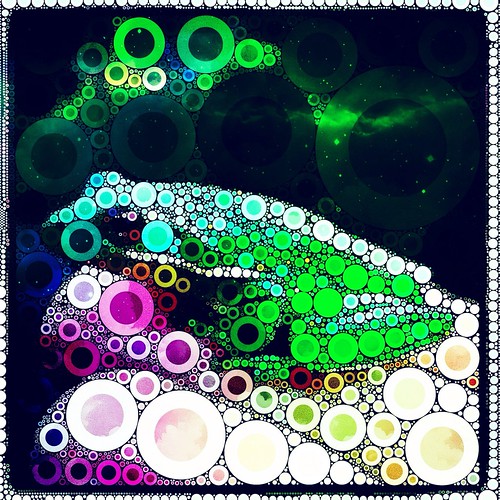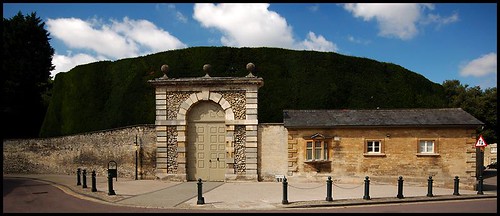Reading was one of my favourite activities as a child – still is, in fact – and of course, good children’s books are a pleasure to all ages. Here are some of my favourites, in no particular order.

The Monster at the End of This Book (starring lovable, furry old Grover) and written by Jon Stone. A brilliant example of how you can play with the physical bookness of a book (although I hear the tale has now made an appearance on Twitter).
The House that Sailed Away by Pat Hutchins. Grandma! Cannibals! Pirates! The first time I ever encountered the word posthumous! (Side note: why is it that cannibals are always depicted as boiling people in large iron pots? If you live on a desert island, as such cannibals generally do, where on earth are you going to get a large iron pot from?)
The Search for Delicious by Natalie Babbitt (perhaps better known for her novel Tuck Everlasting). This is the kind of book I hope to be able to write, and you can’t say better than that.

Big Max by Kin Platt is possibly the first detective story I ever read. Big Max is the greatest detective who ever lived. Everyone knew it. The King of Pooka-Pooka knew it, which is why he called Big Max in when his pet elephant Jumbo went missing. It has been decades since I last read this book, but the phrase “The King of Pooka-Pooka knew it” is still current in my family.
My Cat Likes to Hide in Boxes is a New Zealand book, written by Eve Sutton (and illustrated by Lynley Dodd, who went on to write the Hairy Maclary books). Cats from around the world do marvelous things, but “my cat likes to hide in boxes.” This book shall forever live in family history as the reason for the following exchange:
Father (who ought to have known better): Look, there’s Mr. Anon! He’s from Norway.
Small children (with gusto): “The cat from Norway –”
Father (knowing how it ends): Shhh! Shhhhh!

Embroidery Mary by Priscilla M Warner is a book that I have loved for years. The little community library where I grew up had the only copy I have ever seen, and great was my delight on the day when it was decommissioned because it had only been borrowed twice in the past ten years (and both of those borrowers were me).
The Warden’s Niece by Gillian Avery tells the story of Maria, a Victorian-era girl who flees her bullying school and is taken in by her uncle, the Warden of an Oxford College – mostly because he is impressed by her dream of becoming Professor of Greek (this was at the point when women had only just been admitted as students).
Mistress Masham’s Repose by T.H. White (better known perhaps for his book The Sword in the Stone and its sequels) is the story of another Maria; a delightfully odd book, full of crumbled grandeurs and vigorous characters. My favourites are Cook (“Any character of yours, Mum,” said Cook superbly, “is what I’d not besmirch my own possession of which with the application of,”) and the classic absent-minded professor.

Toot by Leslie Patricelli is not a book I enjoyed as a child, mostly because I was in my late twenties by the time it was published. It is a children’s book, however, and it is a favourite, so I make no excuses for including it here. Toilet humour may be considered infra dig by some, but I, like C.S. Lewis, have grown out of wishing to be thought terribly grown up.
Speaking of C.S. Lewis, The Chronicles of Narnia are such widely cherished favourites that I had probably better be a bit more detailed in my preferences. I particularly enjoyed reading (and re-reading) The Horse and His Boy; and often also The Magician’s Nephew. The Last Battle, on the other hand, I mostly only liked the ending of.
The BFG (by Roald Dahl) is another of those once-read-never-forgotten stories (with, of course, a certain amount of tooting, or rather whizzpopping, of its own). I find it hard to pin down what it is I love about this book, but I do.
The Long Patrol by Brian Jacques was the first Redwall book I ever read – I picked it out by chance in a bookshop – and from the first I loved its unashamed adventurousness. Good stuff.

A Little Princess by Frances Hodgson Burnett is one of those books which combines dreamy wish-fulfillment with the comforting knowledge that someone has it worse than you, and if they can hack it with grace – and of course, imagination – then so can you. And of course, everyone gets what they deserve in the end, which is always satisfying.
Of course, not everything I read as a child was fiction. There was the children’s encyclopaedia, for a start. I don’t remember what sort it was, but it came in a number of volumes and was my invariable resort when I’d run out of other reading. But I usually started afresh from the beginning of Volume 1 each time, thus learning a fair bit about Abbeys and Abbots if nothing else.
And there was a book of crafts which I still wish I could find a copy of, full of vintage photos and fun things to make. There was a stuffed toy lamb with wire coat-hangers keeping its legs straight; a gardening set which included a rake and wheelbarrow; and dozens of other things. If anyone knows the book, and where I can find a copy, I shall be greatly indebted to you and all my sorrows shall be at an end.

What are your favourite children’s books? Have you re-read them recently? Feel free to share your recommendations!
Oh, and the cat from Norway, in case it is still preying on your mind, “got stuck in the doorway.”







